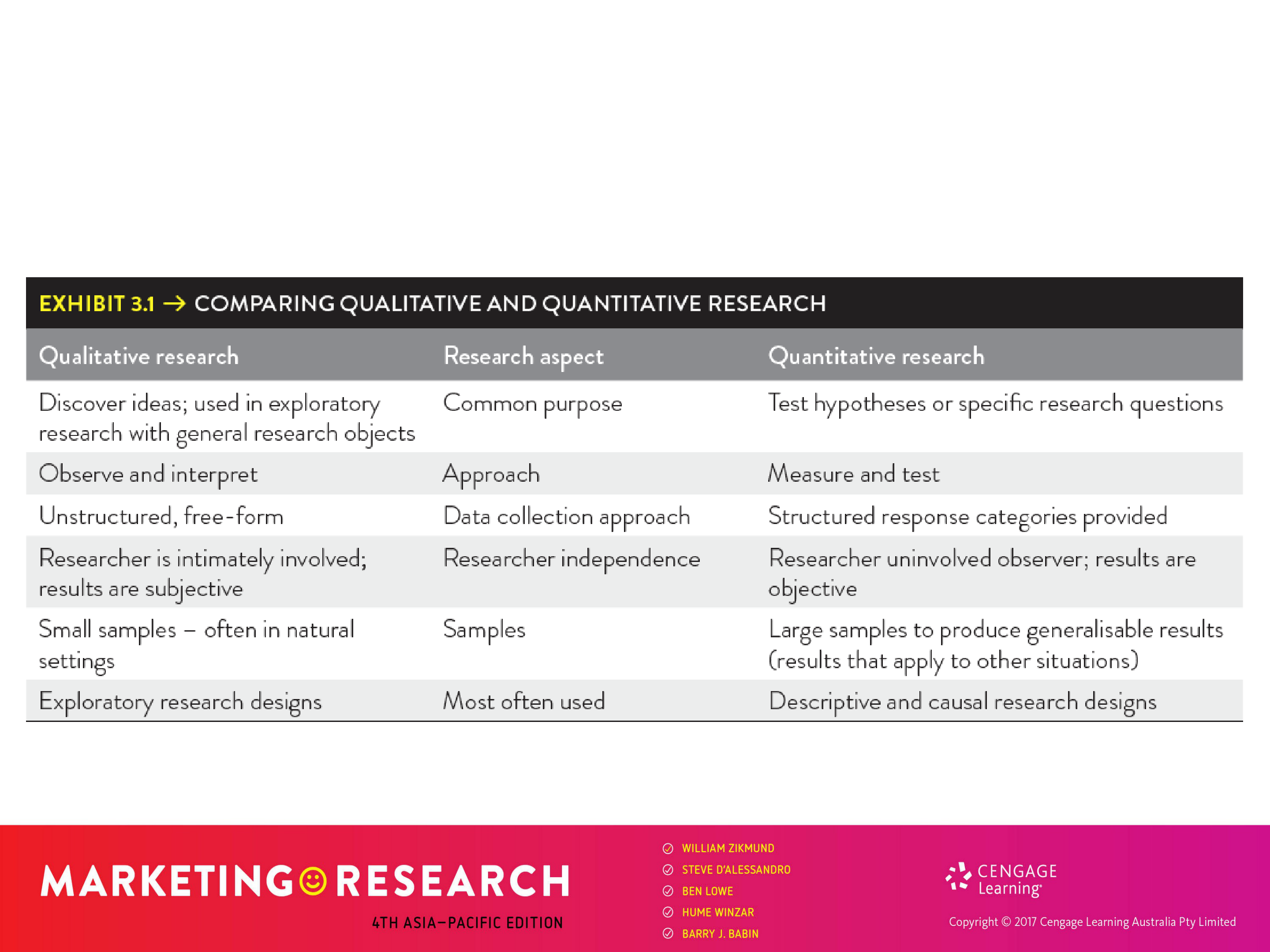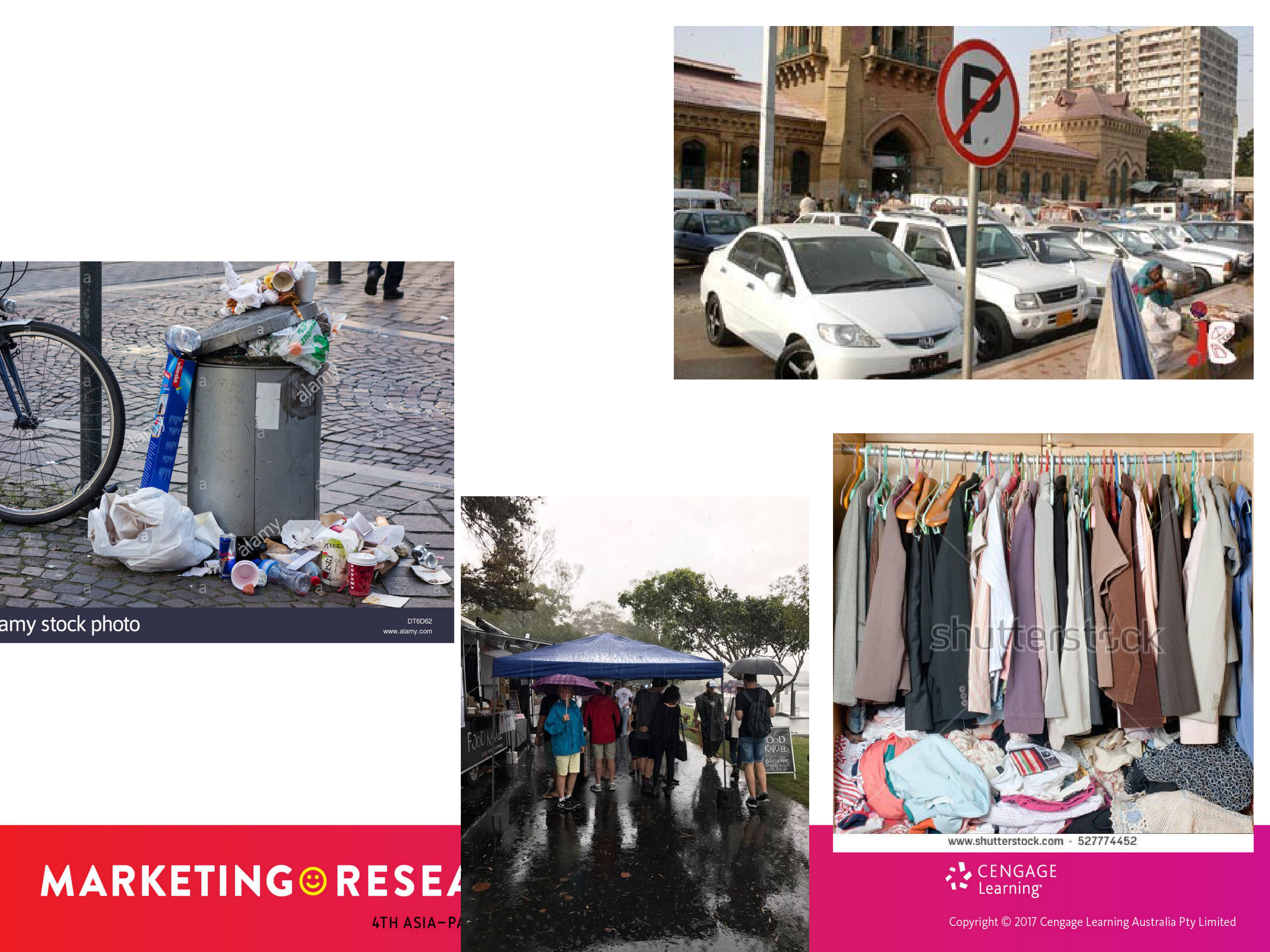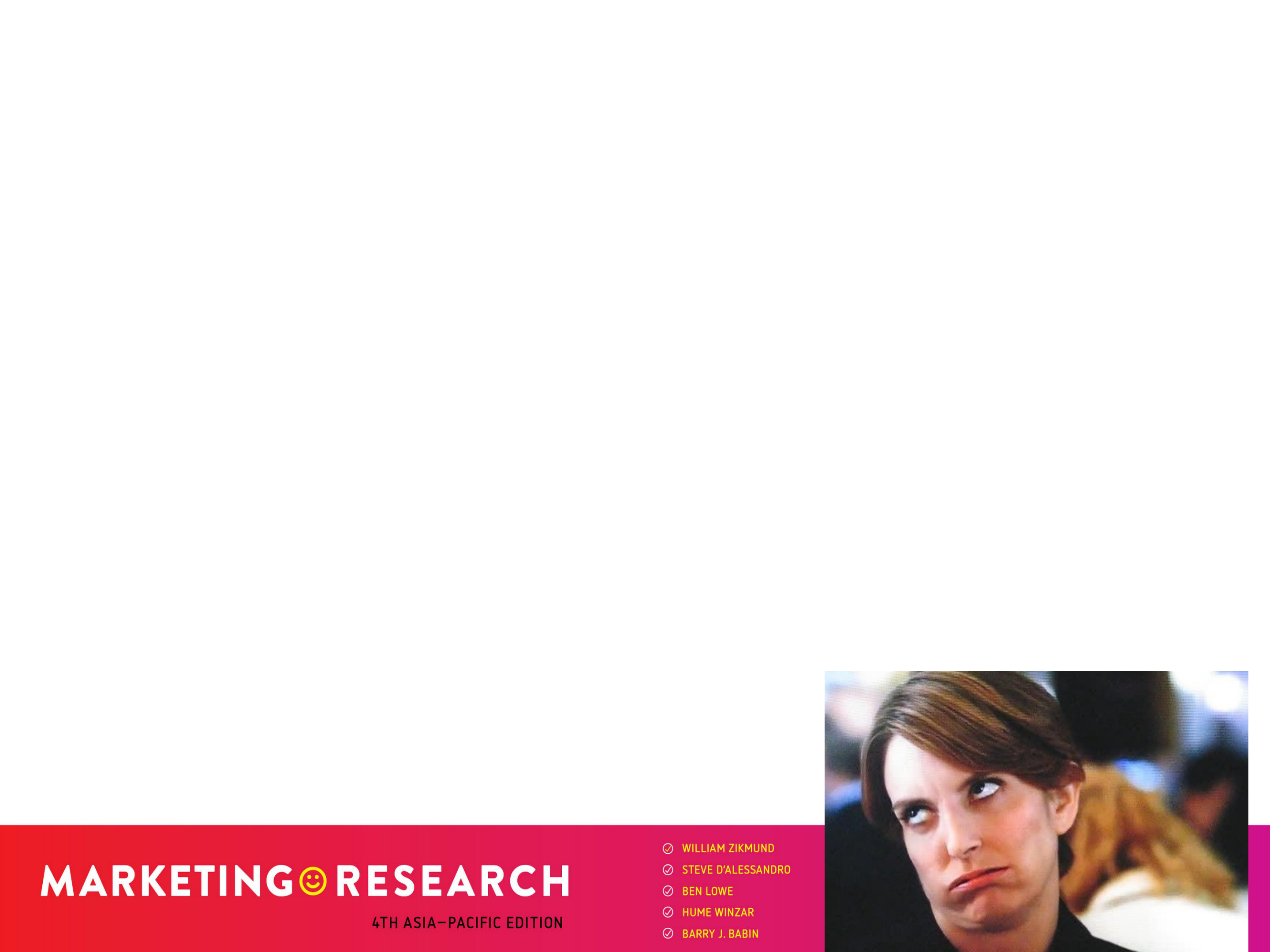Depth interviews and observation you have skin rash your arm
Note techniques discussed in ch. 3 all involve interaction with participants, unlike observation research (ch 6). In practice, mixing methods is common.
QUALITATIVE VS. QUANTITATIVE RESEARCH – IMPORTANT!
Let’s watch this student produced video (IGA). What did you learn about men’s grocery shopping behaviour?
What can be learned
(admittedly from a small
‘sample’!) from these photos?I suggest some interviews/focus groups that get straight into the research questions. At this point, you are
‘diagnosing a situation’.USES OF QUALITATIVE RESEARCH (CONTINUED)
Screening alternatives
– Concept (viability) testing: Exploratory research that tests some sort of stimulus – Bond’s “Bringing
ambition to life” video:
– How do people assemble Ikea furniture?
I would like you to start your group project with exploratory qualitative research. Photos (observation), depth interviews, and/or focus groups.
I like Papyrus Café in the Library. Comment on the following pictures. What might you suggest to the owner of the café?
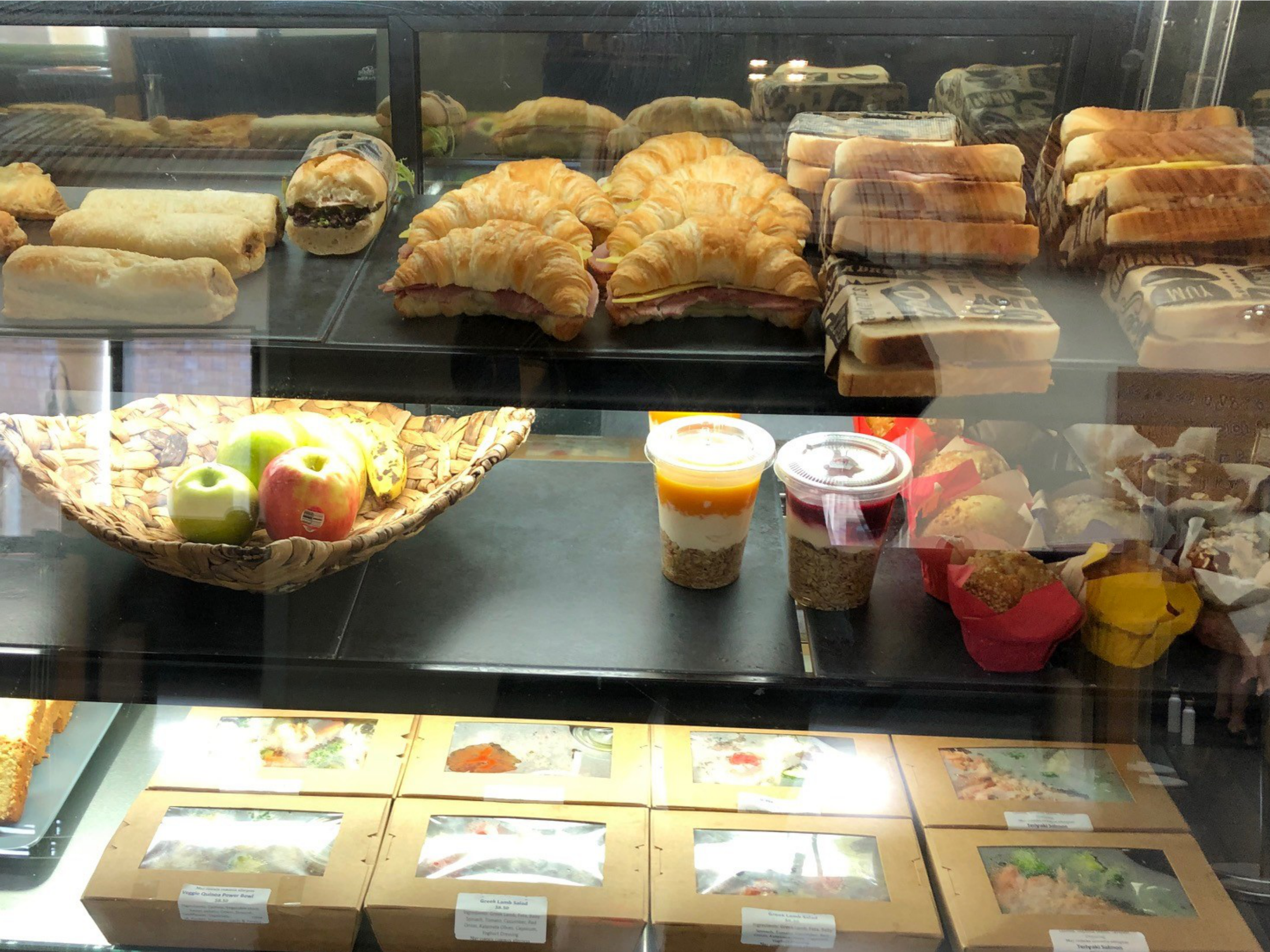
Without being rude/intrusive, take some photos of what people are doing.
• Now take 20 minutes to discuss with your group your interpretation of what you observed. Describe the types of activities done in that location. What, if anything, is interesting? Are there insights that may be useful for management?
An important advance in surveillance capabilities came with the discovery that SARS-CoV-2 is present in the stool of infected people and is detectable even in highly diluted samples, such as municipal wastewater. Wastewater
sampling, used for decades to monitor for polio, appears to detect viral increases of COVID-19 up to six days earlier than diagnostic tests of individuals do.3 While a number of
locations, including Queensland in Australia, Ashkelon in Israel, and Boise in the United States,4 are piloting or using this approach to monitor for COVID-19, wastewater remains an underutilized tool globally.The wastewater-surveillance approach is most applicable in low-prevalence settings where an increase in cases is more noticeable and testing of individuals might otherwise be limited. Ideally, public-health leaders would have the ability to work upstream when increases in viral concentration are detected—for example, from testing town sewers to
determining which neighborhoods are the source of the virus.Depth interviews are great to construct a path
analyses, a sequence of events. “What did you do next?”
Depth interviews give more depth but less breadth than FGs.
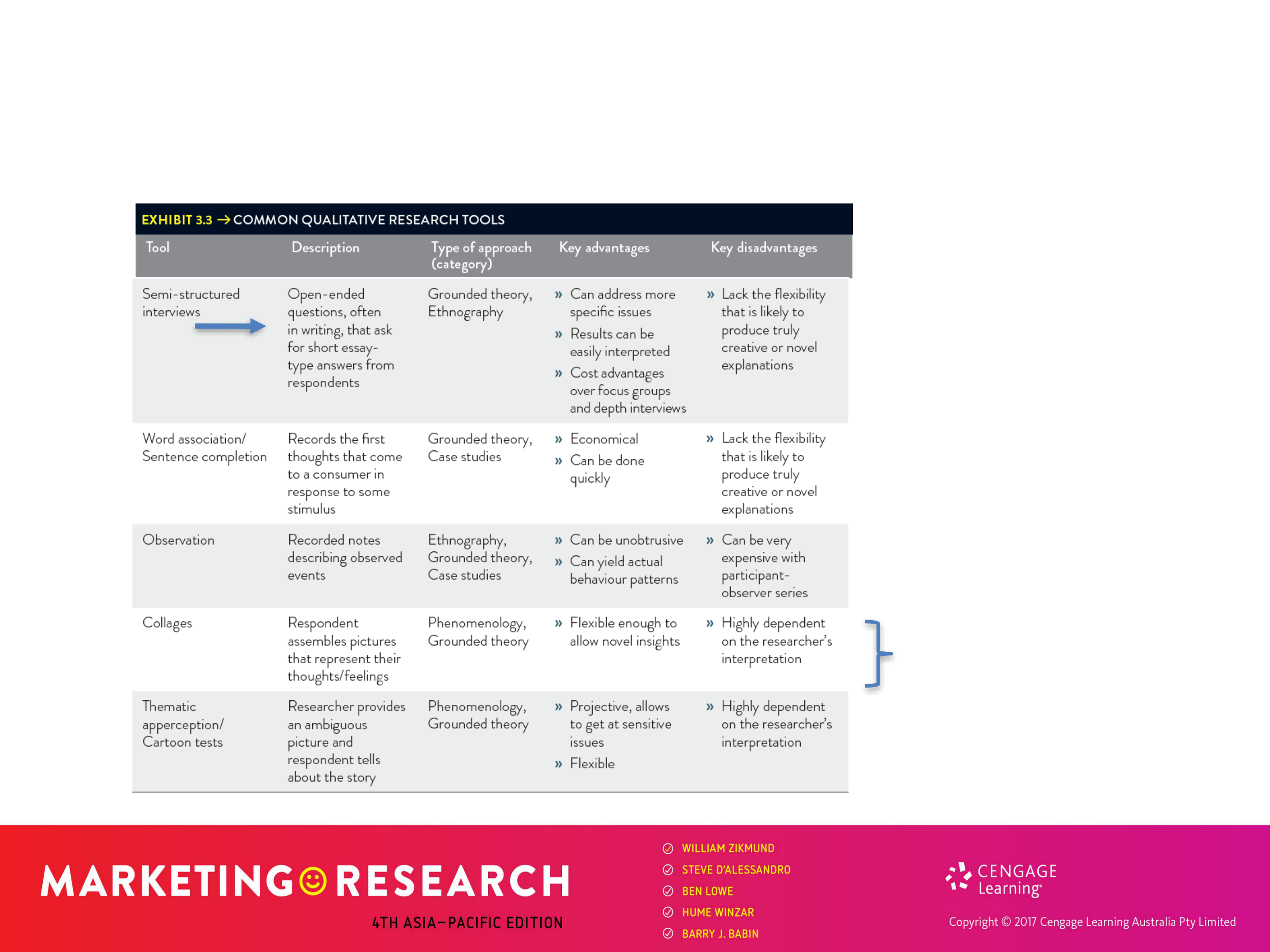


Four major schools of thought influence choice of technique (and these overlap!). I am now in the column ‘type of approach’ in exhibit 3.3 above.
1. phenomenology
2. ethnography
3. grounded theory
4. case studies.
• Relies on interpretation – recall Shoppers in the Wild (“I want something chunkier”)
How people use phones has
• Hermeneutics is analysis of text to find key themes or patterns. Perhaps you ask respondents to write a story or share their story if multiple participants.
• Qualitative research tools include making collages, completing cartoons, describing pictures, story telling – bears resemblance to ethnography, but you are not immersed in the culture.
GROUNDED THEORY
• Does not begin with a theory or a priori beliefs – your goal is to find “ground” to build a theory on.
If you keep digging deeper (some call it
‘laddering’, reaching higher levels of
• Q: why were you looking for a job in Australia?• Q: did you consider other countries?
‘How do you find out about musical events?’
– Good way to study the order of events (describe the process of organizing your holiday or going to the GP); or to gain deep insights into a similar brand/company of interest -- discuss your experience with brand X.
• Qualitative research tools include focus group interviews, depth interviews and observation.
• The group meets at a central location (including on-line) with a moderator who encourages discussion of a topic.
• Allows participants (ideally 6 – 12) to discuss their true feelings, anxieties and frustrations in their own words.
FOCUS GROUPS EXAMPLE
Helpful Focus Group Videos
– Range between 6 to 12 people.
– Relatively homogeneous (similar lifestyles, experiences and communication skills). Let’s discuss why/why not participant homogeneity.
– Usually snacks offered, and often participants get paid.
– Incentives ($) are the biggest motivator to get people to attend.
– Begins with general discussion before focusing on specific topics.
– Can lead ‘long’ discussion: 60 minutes +. If you are finishing in 20 minutes, you have not
“pushed” hard enough: “What do you mean by …?” “Susan, do you agree?”Remember: you are trying to lead an one hour discussion.
ADVANTAGES OF A FOCUS GROUP
• Spontaneity: responses can be more spontaneous.
• Structure: moderator controls the interviews .
Don’t quantify (generalize) the results! Ex: 70% (7 of 10 people) said … They did that (as a joke) in the car ad advertisement video link earlier.
DEPTH INTERVIEWS
• Probing questions:
– ‘Can you give me an example of that?’
– ‘Why do you say that?’
– ‘What did you do next?’(A nice way to get at a chain of events (path analysis or Case Study)
• See Exhibit 3.6 on page 79 to read an excerpt from a depth interview.Depth interviews led to the development of this ad. n
• Sentence completion
• People who drink VB beer are __________.
• Third-person technique and role playing
– The respondent is asked why a third person
behaves in a certain way or what they think about a product. “Why do you think you neighbour owns a Mercedes?”ADVANCES IN QUALITATIVE RESEARCH (CONTINUED)
• Online focus groups
– Members use internet to provide unstructured comments
– But…
• Less interaction = less synergy and snowballing • Moderator cannot see body language and facial expressions. “Sure, I would do that.”• Software tools
– Nvivo, Atlas and Leximancer are popular qualitative analysis software for theme identification and
connecting text. (Bond offers free classes on Nvivo)• Can lead to incorrect decisions because...
– Interpretation of findings typically judgemental (subjective).
KEY TAKEAWAYS (CONTINUED)
• Popular techniques include: focus groups, depth-interviews, semi-structured interviews, observation and projective techniques. Each has benefits and limitations.


